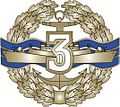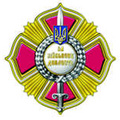 Glory and Honor Badge Glory and Honor Badge |
 For valiant military service to the Motherland Badge For valiant military service to the Motherland Badge |
| Armed Forces Cross of Valor |
| Armed Forces Cross of Merit |
| For services in the aftermath of an emergency |
| For selfless work in the Armed Forces of Ukraine |
| Honorary military liaison |
| Participant in military exercises |
| The best sergeant (petty officer) of the Armed Forces of Ukraine |
 For services to the Armed Forces of Ukraine Badge For services to the Armed Forces of Ukraine Badge |
 ATO Badge ATO Badge |
 For achievements in military service Badge (I and II class) For achievements in military service Badge (I and II class) |
 For achievements in military service Badge (I and II class) For achievements in military service Badge (I and II class) |
 Example Badge Example Badge |
 Example Badge Example Badge |
 Example Badge Example Badge |













































